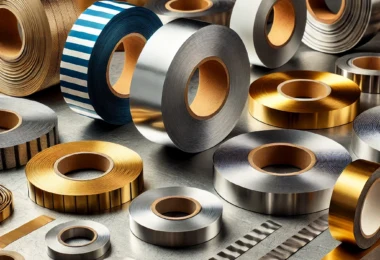Insulate a house from outside or inside allows you to achieve a comfortable temperature inside the building and save on utility bills. This can be done in different ways; each has its characteristics that must be considered before carrying out work.
Insulate a house from outside
External insulation of a house is chosen for the following reasons:
- low cost of materials and work;
- excellent energy saving, thanks to which you can reduce heating costs by up to 60%;
- creating an aesthetic and durable facade;
- improving the indoor microclimate, which has a positive effect on the quality of life;
- creating a thermos effect, due to which the air in the room will heat up more slowly in summer and cool down in winter;
- protecting the wall from freezing;
- keeping the area of the room unchanged, which cannot be said about insulating the house inside.
- The only drawback of external insulation of a house is the higher complexity and, accordingly, the cost of the work.
How can you insulate a house from outside?
The most popular materials used to insulate a house from outside are:
- Expanded polystyrene. Its advantages include low weight and cost and minimal moisture absorption. However, it cannot withstand direct sunlight and high temperatures; solvents and gasoline instantly destroy it. In addition, it often becomes a place for mice to settle. Due to its low vapour permeability, polystyrene foam is not suitable for insulating a wall made of “breathable” material.
- It extruded polystyrene foam. The material consists of polystyrene granules and graphite, making it more durable and giving energy-saving properties. Its advantages also include environmental friendliness, ease of installation and resistance to mechanical stress. This allows extruded polystyrene foam to be used for 30 years or more. Its disadvantages are the same as those of conventional polystyrene foam.
- Polyurethane foam. A material with a foam-cellular structure, which is created from plastics. This makes it an excellent thermal insulator. The high level of adhesion allows it to be used to create a sealed coating on any surface. The advantages of polyurethane foam include resistance to fungus formation, high humidity and high temperatures, and high sound insulation properties. The material is suitable for insulating complex structures and framing houses through hose and compressor installation. The need to use additional equipment and the high cost of the material have become the main disadvantages of polyurethane foam.
- Stone or basalt wool, made from rock stone. The material’s minimum density and fibrous structure give it minimal thermal conductivity. But despite this, stone wool is resistant to combustion and is distinguished by its ability to “breathe”. Due to its high vapour permeability, it can be used to insulate a frame building. The disadvantages of this type of insulation include the need to create a moisture-proof layer and mandatory fixation, as well as a low level of strength, so over the years, it begins to deteriorate.
- Foamed polyurethane. They are used for spray insulation or as board and foam. Using it on wet facades is not recommended, as the material can quickly come off.
- Ecowool – consists of cellulose fibres. It is used for spraying on a wall with sheathing or to fill the space between the cladding and the wall.
- Insulating the house inside
- Insulation of the house from the inside is carried out less frequently. Typically, these are cases where local authorities prohibit external insulation if the wall is at the junction of two buildings or opens into an elevator shaft.
When choosing how to insulate a house from outside, you need to consider that internal thermal insulation can:
Reduce the area of the room.
This leads to high humidity in the room or the formation of fungus on the walls. This can happen if the insulation installation technology is violated. Protecting the material from condensation and considering reliable ventilation in the building to avoid troubles is essential. In addition, to perform it, you must carefully prepare the room – remove or protect the furniture. And all insulation work must be entrusted to professionals.
Selection of material to insulate a house from outside
When choosing how to insulate a house from outside, you need to pay attention to the following materials:
- Styrofoam;
- extruded polystyrene foam;
- mineral wool;
- Each has its characteristics, pros and cons, which must be discussed separately.
Styrofoam
The material is affordable and considered quite effective. The thickness of its sheets may vary. The optimal thickness for internal wall insulation will be 5 cm. This will make it possible to install without special tools quickly.
The disadvantages of polystyrene foam are:
- flammability;
- minimum sheet strength;
- unsatisfactory vapour permeability, which can lead to the effect of a sauna in the room.
- The last drawback can be avoided by providing the room with high-quality ventilation.
Extruded polystyrene foam
The material is very similar to polystyrene foam; only it has a yellow tint. It is also more robust and more durable, but at the same time, it does not allow moisture to pass through and is flammable. Therefore, it is possible only after organizing a forced ventilation system.
Mineral wool
Mineral wool is used quite often to insulate a house from outside. In this case, preference should be given to basalt mineral wool. It is easy to install and is considered durable and fire-resistant. In addition, it is affordable.
Insulate a house from outside or inside allows you to achieve a comfortable temperature inside the building and save on utility bills. This can be done in different ways; each has its own characteristics that must be considered before carrying out work.
Also Read: Refreshing Your Space: The Importance of Insulation Replacement for a Comfortable Home
Insulating the house from the outside
External insulation of a house is chosen for the following reasons:
- low cost of materials and work;
- excellent energy saving, thanks to which you can reduce heating costs by up to 60%;
- creating an aesthetic and durable facade;
- improving the indoor microclimate, which has a positive effect on the quality of life;
- creating a thermos effect, due to which the air in the room will heat up more slowly in summer and cool down in winter;
- protecting the wall from freezing;
- keeping the area of the room unchanged, which cannot be said about insulating the house inside.
- The only drawback of external insulation of a house is the higher complexity and, accordingly, the cost of the work.
Many professional companies offer insulation installers in Central Coast. They are experts in insulating walls, roofs, and floors. You can choose according to your needs.
Conclusion
Whether insulate a house from outside or inside, the choice between the two methods involves careful consideration of various factors. External insulation proves advantageous with its cost-effectiveness, substantial energy savings, and aesthetic benefits, contributing to an improved indoor microclimate. The thermos effect generated by external insulation further aids in maintaining a comfortable temperature throughout the year.
















